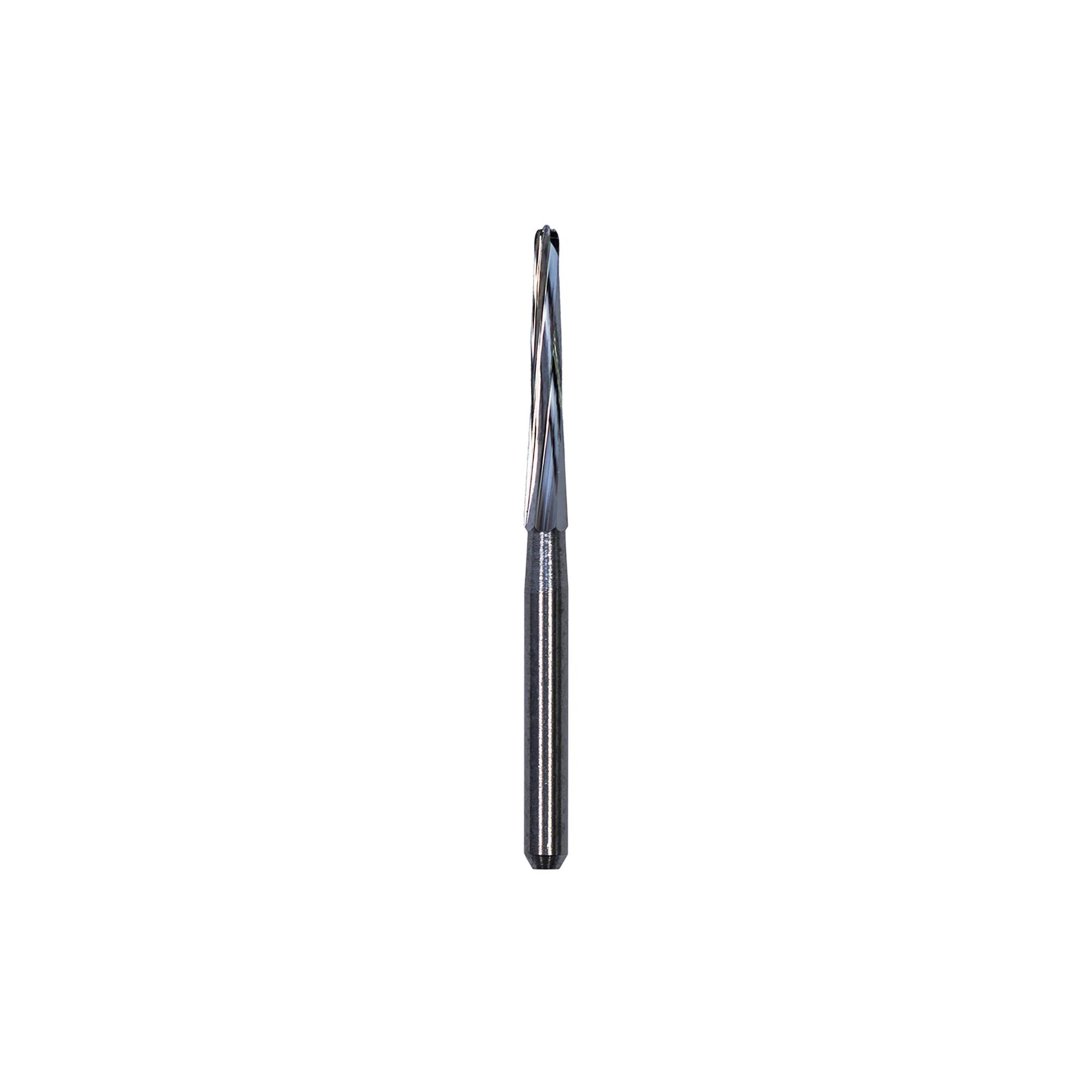Introduction to round burs in Dentistry
Round burs are integral devices in dental practice, serving an essential role in various clinical procedures. With their spherical heads, they provide a high degree of flexibility for cutting and shaping dental hard tissue. Given their versatile functionality, selecting the right size is critical for achieving optimal results in dental treatments. This article delves into the intricacies of round bur sizes, discussing their significance, applications, and the factors that influence their selection.
Common Materials for Round Burs
● Tungsten Carbide
One of the most commonly used materials for manufacturing round burs is tungsten carbide. Known for its durability and efficiency, tungsten carbide burs are particularly effective in cutting through dental hard tissues with minimal vibration. These burs come in various sizes, offering clinicians a range of options to suit different procedural requirements.
● Diamond-Coated Burs
Diamond-coated burs are another popular choice among dental professionals. These burs have a coating of diamond particles which provides an exceptional cutting edge, making them ideal for precision work. The level of smoothness achieved during dental procedures can vary depending on whether a fine, medium, or coarse-coated bur is selected.
● Ceramic and Zirconia Burs
Ceramic and zirconia burs have been gaining traction in dental practices due to their high resistance to wear and thermal shock. These burs are particularly beneficial for procedures requiring minimally invasive techniques, as they cause less damage to surrounding tissues.
Round Bur Sizes and Their Significance
● Most Common Sizes Used
The commonly used sizes of round burs range from size 1 to size 10, with sizes 2, 4, 6, and 8 being particularly popular for their versatility. The choice of size has a direct impact on the clinical outcome, making it essential for practitioners to select the most appropriate size for each specific procedure.
● How Size Impacts Functionality
The diameter of a round bur significantly affects its cutting efficiency and precision. Smaller sizes like size 2 are ideal for delicate procedures that require high precision, such as caries removal near the pulp. Conversely, larger sizes like size 8 are suitable for bulk removal of hard tissue, providing faster results with less precision.
Choosing the Right Round Bur Size
● Factors Influencing Size Selection
Several factors influence the selection of round bur sizes, including the type of procedure, the patient's dental anatomy, and the clinician’s preference. For instance, deeper cavities might require larger bur sizes for efficient removal of decayed tissue, while superficial cavities can be managed with smaller sizes.
● Clinical Scenarios Dictating Size Preference
Specific clinical situations often dictate the choice of round bur size. For example, the removal of dental caries typically demands smaller burs to ensure minimal removal of healthy tissue. In contrast, preparing a tooth for a crown might require larger burs to achieve the necessary depth and shape.
Comparative Efficiency of Different Bur Sizes
● Cutting Speed and Precision
The cutting speed of a bur is directly related to its size. Larger burs can remove tissue more quickly, but they may lack the precision needed for intricate work. Conversely, smaller burs offer higher precision but operate at a slower cutting speed.
● Impact on Tooth Structure
The size of the bur also affects the amount of heat generated during cutting. Larger burs can produce more heat, potentially causing thermal damage to the tooth structure. Therefore, the choice of bur size must balance efficiency with the preservation of tooth health.
Round Bur Sizes for Caries Removal
● Deep vs. Shallow Cavities
For deep cavities, larger burs such as size 8 are often used to quickly remove decayed tissue and minimize the risk of pulp exposure. In contrast, shallow cavities can be managed with smaller burs, which provide greater control and precision.
● Recommended Sizes: 2, 4, 6, 8
The sizes 2, 4, 6, and 8 are commonly recommended for caries removal due to their versatility. Size 2 is ideal for minimal intervention, size 4 for moderate decay, size 6 for more extensive decay, and size 8 for severe cases requiring substantial removal of decayed tissue.
Maintenance and Sterilization of Round Burs
● Importance of Regular Inspection
Maintaining round burs in optimal condition is crucial for ensuring their effective performance. Regular inspection helps identify any wear or damage, which can compromise the quality of dental procedures.
● Cleaning and Sterilization Protocols
Proper cleaning and sterilization are essential for reusable burs. Pre-soaking in an enzymatic solution can loosen debris, while subsequent sterilization ensures that the burs remain safe for use. Diamond burs require special care to prevent dulling of the diamond coating during sterilization.
Ergonomics and Patient Comfort
● How Bur Size Affects Ergonomics
The size of the bur directly impacts the ergonomics of dental procedures. Smaller burs offer greater control and precision, reducing hand fatigue for clinicians. Larger burs, while efficient, may require more force and can lead to quicker fatigue.
● Patient Comfort Considerations
Patient comfort is paramount in dental care. Using the appropriate bur size can minimize discomfort by reducing the duration of the procedure and the amount of pressure applied. Smaller burs tend to be less invasive and generate less heat, enhancing patient comfort.
Advancements in Round Bur Technology
● Innovations in Design and Material
Advancements in dental bur technology have led to the development of more efficient and durable round burs. Innovations such as crosscut blades and improved material compositions have enhanced the cutting efficiency and longevity of these burs.
● Impact of New Technology on Common Sizes
New technological developments have also influenced the commonly used sizes of round burs. Enhanced designs allow for more precise cutting, making smaller burs more effective for tasks that previously required larger sizes. This shift has improved overall clinical outcomes and patient experiences.
Conclusion: Best Practices for Round Bur Use
● Summary of Size Selection Tips
Choosing the correct size of round bur is essential for achieving the best clinical outcomes. Clinicians should consider the type of procedure, patient anatomy, and the desired balance between cutting speed and precision. Regular maintenance and sterilization are also crucial for ensuring the longevity and effectiveness of the burs.
● Final Thoughts on Optimizing Bur Use in Practice
By understanding the significance of different round bur sizes and their applications, dental professionals can enhance their practice's efficiency and patient satisfaction. Staying updated with advancements in bur technology and adhering to best practices in maintenance will further optimize the use of round burs in clinical settings.
Company Introduction: Boyue
Jiaxing Boyue Medical Equipment Co., Ltd. is a leading manufacturer specializing in the production of medical rotary cutting tools using advanced 5-axis CNC precision grinding technology. Our main products include Dental Burs, Dental Files, Bone Drills, Orthopedic and Neurosurgery Tools, and CAD/CAM Dental Mills Burs. We pride ourselves on our skilled workforce, professional technical teams, and strict quality control measures. With over 23 years of experience, Boyue is committed to delivering high-quality, reliable dental tools to the global market, ensuring exceptional precision and reliability in all our products.

Post time: 2024-07-30 14:44:09


